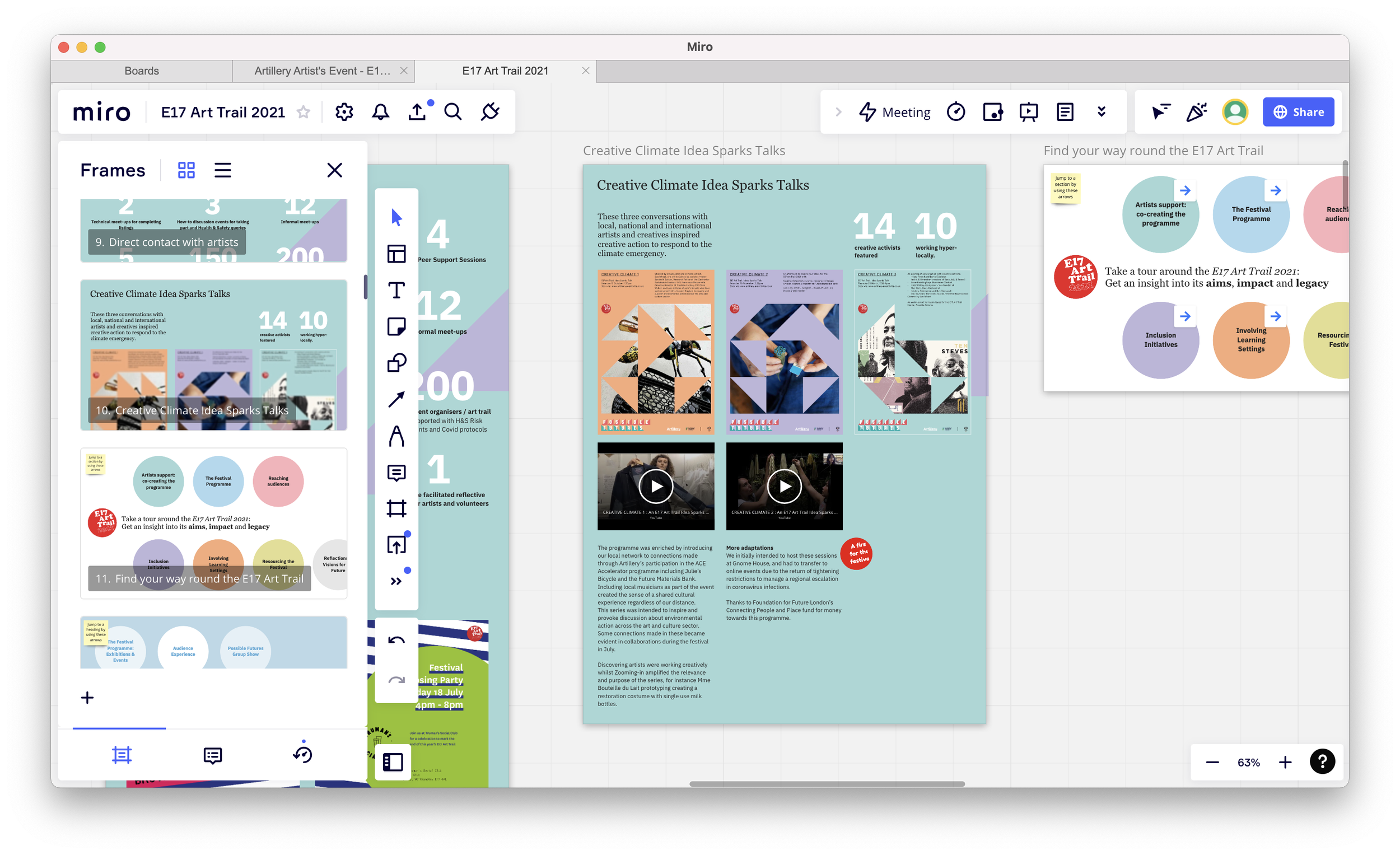Artillery Miro Report.
Artillery is an arts organisation based in Walthamstow, east London. They are a force for arts and culture locally, putting on a wide variety of events throughout the year. Every two years they organise the E17 Art Trail – over two weeks of exhibitions, events and workshops, involving thousands of artists and hundreds of locations – each with specific schedules. There’s a lot of work in getting that programme together, but that’s not even the half of it!
The ask
Artillery wanted to use Miro (a digital whiteboard application built to allow remote collaboration) to put together an interactive report on their work for the E17 Art Trail that happened in 2021.
The opportunity
The great thing about Miro is that you can add a wide variety of media to a board, a brilliant way to show the breadth of the work they do and enable. And critically it allows people to add their own thoughts and feedback, reflecting Artillery’s appetite to engage and respond to the artists, venues and funders they work with.
The challenge
How best to tell a clear story that’s easy to follow within what is an infinite digital canvas? Navigation isn’t too much of a problem when you’re using Miro to collaborate as someone will be there to keep people focused on the right areas – but this report has to work without a guide. We also have to be mindful that many people reading the report may not be familiar with this tool.
The solution
In my mind, this meant we needed structure and simplicity. To do that we colour coded each of the themes in the report, so you intuitively know where you are. And we used frames to break down each theme into individual stories. Each frame is like a page, but its size and format can be altered to fit the content. Using frames, you can also use the thumbnail view in the sidebar to make navigation very straightforward.
The welcome frame gives you a quick intro to the wider board, how to navigate within it, and overview of how it’s structured, how to add their own thoughts and feedback and where to get help.
The content frame introduces the colour coding and gives links to each of the themes.
The first frame for each theme gives links to the all the individual stories, making it easy to navigate and jump to whatever interests you most.
As you go through the report we make use the Miro’s functionality with PDFs you can click through, videos and audio you can play and layouts you can zoom into to get more detail.
Consistent headings, intro copy and body copy aide readability and accessibility. Quotations and stats are pulled out throughout to help communicate the scale and impact of the work.
Here you can see the thumbnail view of the frames in the panel on the left. You can pinch, zoom and track around the board, or use these thumbnails to access the frame you want.
From this report board we also give access to a reflections board – a place for artists to give more feedback on their experience – and their ideas for how the Art Trail might grow, adapt and develop.
This workshop board breaks down into four sections, unified by the tree metaphor, giving a sense of the creative ecosystem Artillery tends.
Sam was proactive at proposing design solutions as we navigated the possibilities and challenges of Miro. He is agile in identifying and actioning adaptations, and always alert to the overall purpose and rationale of the work. I so appreciated him being on the team as we embarked on a very involved task, it has been an absolute pleasure working with him.
— Morag McGuire, Co-Director, Artillery
Let’s talk.
Are you an organisation, charity, or social enterprise wanting to share multi-media evidence of your work integrated into a report? Are you looking to communicate the value and breadth of your work to your funders? If so, we’d love to chat about how we might help – use the button below to send us an email.







